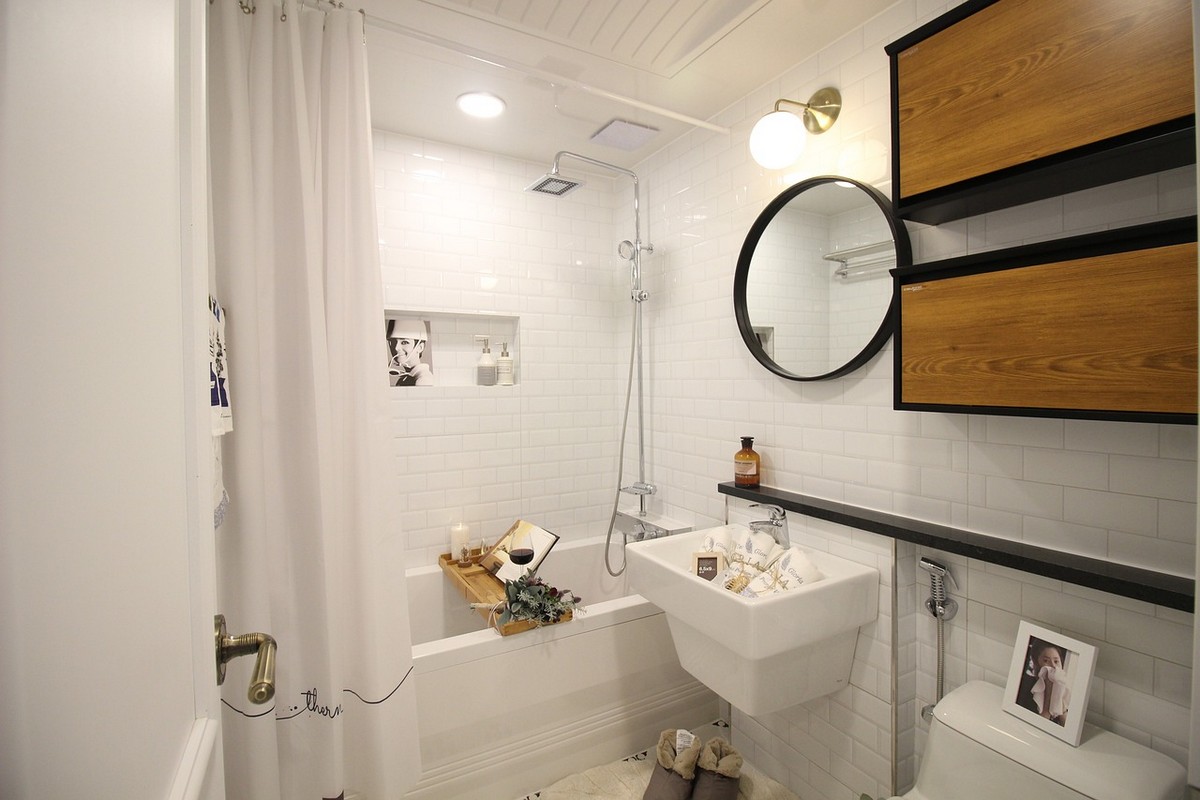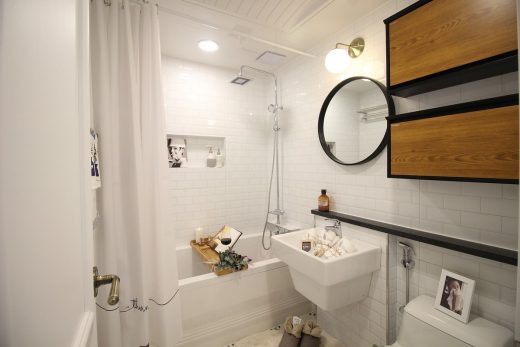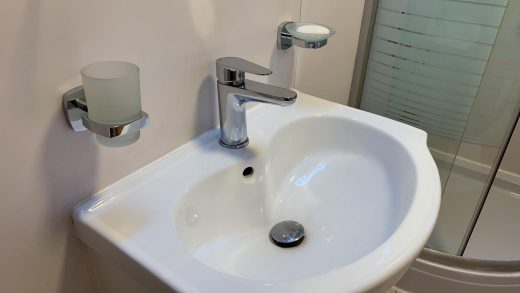How to fix a persistent dripping faucet, Home appliances and fixtures, Property water flow guide
How Can I Resolve a Persistent Dripping Faucet?
5 June 2024
Tackling a persistent dripping faucet can be a bothersome task, yet it is crucial to resolve to save water and prevent further damage.
Unresolved, this issue can lead to increased water bills and potential damage to your home’s plumbing system. Nonetheless, by understanding the common causes, you can effectively resolve this problem.
Commonly, a dripping faucet is generally caused by a worn-out washer. This small component is constantly under pressure from the water supply rendering it susceptible to tear and wear.
Changing the washer can often fix the dripping faucet. However, the task may vary depending on your faucet model and may require some basic DIY skills.
Alternatively, the issue may be caused by a problem in the valve seat that connects the faucet and the spout. Corrosion or accumulation of water sediments can lead to leaks.
Regular cleaning can prevent these issues but if the problem persists, it might be time to call professionals. Their team at Ferguson’s Plumbing are equipped to handle these problems quickly and efficiently.
Regardless of the cause, it’s important to address a dripping faucet promptly. While temporary solutions may ease the problem, long-term fixes often require the expertise of professional plumbers.
It is advisable to invest in professional help rather than risking further damage or inefficient repairs by attempting to solve complex plumbing issues yourself.
Identifying Faucet Dripping Causes
Faucets can start dripping for all sorts of reasons. It could be something as simple as a worn-out washer or something more complex like a damaged valve. Understanding the cause is key to addressing the issue.
The critical step is determining the type of faucet you have: ball, cartridge, or disc. This information mainly directs your troubleshooting steps. Check inside for any noticeable wear and tear.
A startling fact: A faucet that drips at a rate of one drip per second can lead to over 5 gallons of wasted water per day. To put in perspective how detrimental a dripping faucet can be, consider the following:
| Time | Water Wasted |
| 1 Day | 5 Gallons |
| 1 Week | 35 Gallons |
| 1 Year | 1,825 Gallons |
| Note: Based on one drip per second. | |
Your first goal should be to identify the primary source of your persistent dripping problem. Whether it’s due to worn-out internal components or simply because your valve needs tightening, getting to the root cause will ensure your repairs are successful in the long term.
Choosing Appropriate Tools for Fixing
The first step to resolving your persistent dripping faucet is choosing the appropriate tools. It’s critical to have the right equipment at your disposal in order to properly address the issue and prevent further damage.
The effectiveness of repairs relies heavily on using suitable tools. Inadequate tools often lead to improper fixing, eventually resulting in an even bigger problem such as increased leakage or damaged plumbing parts.
- All-purpose wrench: This is used for tightening and loosening various types of fittings. Ensure it’s rust-free and sturdy enough.
- Screwdriver: You’ll need this handy tool to disassemble and reassemble the faucet.
- Plumber’s tape: Also known as Teflon tape, it helps prevent leaks around threaded connections.
In addition, you should always consider the condition of your faucet before getting started. In some instances, a simple fix may not be effective especially in older models, in which case replacement might be necessary.
You must remember that poorly performed repairs not only result in more damage, but also lead to water wastage. In the United States, the average home can waste approximately 180 gallons per week, or 9,400 gallons annually due to leaks, including dripping faucets.
This highlights the importance of using adequate tools and applying correct procedures when fixing your dripping faucet. Preparation and accuracy go a long way towards ensuring successful outcomes when dealing with plumbing issues.
Procedural Steps for Repair
Your faucet might start dripping at any time due to a variety of reasons. Here’s a concise step by step guide on how to get it fixed efficiently.
Identify Faucet Type
First, you need to identify your faucet type. It could be a ball, cartridge or compression faucet. Understanding the type will determine your following steps.
Purchase Replacement Parts
For instance, if you have a ball faucet, you’ll need to get a replacement kit designed for your specific model. Be sure to bring your old parts to the store for an easy match-up.
Faucet Disassembly
You will now disassemble your problematic faucet. Make sure you slowly remove each part and keep them in order, this will ease the reassembly process later.
Replace Faulty Components
Your next task involves replacing the faulty components with new ones that were purchased earlier. The process can differ depending on the type of faucet you own.
According to the Environmental Protection Agency (EPA), household leaks can waste nearly 1 trillion gallons of water annually nationwide. Ensuring that your faucets are not dripping is not only important for reducing household costs but also plays a significant role in water conservation.
Handling Different Faucet Types
There are various types of faucets each with a unique mechanism for controlling water flow. Each of them may have slightly different methods of fixing their leaks. A single dripping faucet can waste around 3,000 gallons of water per year, so it’s crucial to repair them promptly to conserve resources.
Fixing Ball Faucets
Ball faucets are single-handled and are common in kitchens. Your dripping ball faucet needs a replacement kit that includes new parts. After shutting off the water supply, unscrew and remove the handle. Replace the worn-out components with new ones from your kit.
Repairing Cartridge Faucets
Cartridge faucets can be either single or dual-handled. To fix these types, use a screwdriver to remove the decorative cap and handle. Pull out the cartridge and replace it with a new one. Reassemble the faucet, ensuring all parts are properly tightened.
Addressing Compression Faucet Leaks
If you’ve got an old-style compression faucet with two handles, its washers may need replacing. Turn off your water, then remove the handle and packing nut. Replace the worn washer at the end of the spindle, then reassemble your faucet.
Mending Disk Faucets
Disk faucets employ a single lever over a wide cylindrical body. If yours is leaking, it likely needs new sealant or replacement components for its cylinder assembly. Disassemble your disk faucet, locate any faulty seals or disks and replace as needed.
DIY Strategies for Faucet Fixes
Fixing a leaky faucet might feel intimidating, but with a touch of DIY spirit, it’s achievable. Here’s how you can tackle this problem on your own without sweat. Firstly, determine the type of faucet you have as they require different repair methods. Familiarize yourself with its components and keep an essential toolkit handy.
You need to comprehend that faucets have several different parts & all have distinct functions. Hence, understanding where the malfunction occurs is vital. Basic knowledge about various types of faucets: cartridge, ball or compression can ease your repair process.
- Ball Faucets: The most common type that has several parts which need careful replacement.
- Cartridge Faucets: This style has individual hot and cold water valves that need replacing.
- Compression Faucets: Known to be prone to leaks, generally fixes involve replacing a washer.
You must also remember to turn off the water supply before you start any repairs. Ignoring this step could lead to flooding in your workspace. Another important thing is to loosen the critical faucet parts carefully. Forced removal might cause permanent damage.
The cost of fixing a leaky faucet is often under $200 for a professional plumber, which can be a cost-saving measure when compared to the cost of water wasted. However, by using a DIY approach, you may save even more while learning handy household skills.
A persistent leak may indicate deeper plumbing issues, so if your repair attempts fail, it’s advisable to seek professional help. Plumber services are not prohibitively expensive and can safeguard against extensive water damage in your home.
Preventive Measures Against Future Dripping
Although solving a leaking faucet presents instant relief, preventing future occurrences is equally essential. This section will discuss proactive steps you can adopt to minimize faucet dripping chances in the future.
- Maintenance Inspections: Regular biannual faucet and plumbing inspections can detect potential issues before they escalate, saving you from inconvenience and additional costs.
- Quality Faucet Installation: Opting for high-quality faucets during fixture selections also mitigate the probability of frequent leaks. Observe the faucets’ lifespan, and preemptively replace fixtures nearing their end.
- Ample Water Pressure: Maintain moderate water pressure because excess stress on faucet parts wears them down over time, resulting in leaks.
You may not have control over some factors that cause faucets to leak. However, by staying proactive with maintenance routines, factoring in the quality of your fixtures, and regulating the water pressure can significantly curb this issue.
Beyond these, if your tap persists in dripping despite all preventive measures and fixes, it might necessitate professional intervention. Enlist a qualified plumber’s service to diagnose and effectively resolve any underlying problems, ensuring a long-term fix.
Estimating Faucet Repair Costs
The first step to resolving a persistent dripping faucet is to estimate the potential repair costs. This includes taking into account the price of necessary replacement parts and, if needed, hiring a professional plumber.
When assessing your repair costs, bear in mind that choosing to fix the leak promptly saves you significantly in the long run. According to studies, fixing easily corrected household water leaks can save homeowners about 10 percent on their water bills.
- Consider Faucet Type: The cost depends largely on your faucet type. Compression faucets, for example, would typically need new seat washers.
- Pricing Potential Parts: Take time researching online for pricing estimates of essential parts such as O-rings or valve seats.
- Gauge Professional Help: If DIY doesn’t appeal, get quotes from local plumbers for a more precise cost picture.
Your potential savings from fixing leaks are considerable, so it’s worth investing your time and resources. Prompt actions yield financial benefits down and prevent further water wastage that contributes to your environmental footprint.
Remember to scrap lower-quality parts as these will likely lead to recurrent issues in future. Always invest in high-quality replacement parts and professional services when necessary.
Comments on this guide to How to fix a persistent dripping faucet article are welcome.
Kitchen Design
Kitchen Articles
Water Faucets
Expert solutions for faucet care
Consider a Faucet-mounted Water Filter
Latest hands-free electronic water faucets
How to hook up portable dishwasher to pull-out faucet
Home Design
Home Design Articles
Comments / photos for the How to fix a persistent dripping faucet page welcome.







